In 2011, Mitsubishi announced Jump 2013, a three-year business plan that focused its attention to building SUVs, pick-up trucks and minicars for emerging and fast-growing markets in Asia, markets that have yet to mature, like Thailand and Indonesia. To put this in perspective: in its last fiscal year, Mitsubishi sold 357.000 vehicles in Southeast and Northern Asia, about 36% of its worldwide sales.
However, in the US market, Mitsubishi is like the kid that never seems to be getting it right.
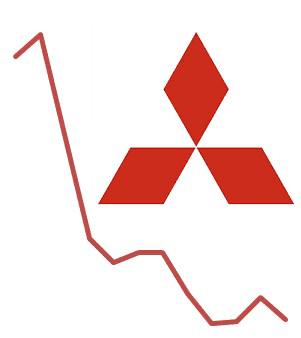 * In 2002, Mitsubishi’s US sales peaked at 345.111 vehicles, with a market share of 2%, almost twice as many as Subaru, ahead of Volkswagen and Kia, and within 30.000 units of Hyundai.
* In 2002, Mitsubishi’s US sales peaked at 345.111 vehicles, with a market share of 2%, almost twice as many as Subaru, ahead of Volkswagen and Kia, and within 30.000 units of Hyundai.
* Ten years later, Mitsubishi sales in the United States had dropped 83% on 2002 to just 57.790 vehicles, with a market share of less than 0,4%, a drop in the ocean compared to 703.007 Hyundai, 557.599 Kia, 438.133 Volkswagen and 336.441 Subaru sales. In the first ten months of 2013, sales are off another 1,5% in a market up 8%. Mitsubishi transaction prices are among the lowest of all brands, and its brand value has virtually evaporated, resulting in North American operating losses every year since 2007.
Since Suzuki dropped out of the US market last year, Mitsubishi is the smallest Japanese automaker in the continent, and it has promised its dealers and their last few customers that it is here to stay. But no new models were planned for a couple of years, despite already having an aging line-up. But that’s changed, but not for the better: the latest product plans are the final nail in the coffin. It’s over. There’s No More Hope.
Mitsubishi Mirage minicar to be sold in North America
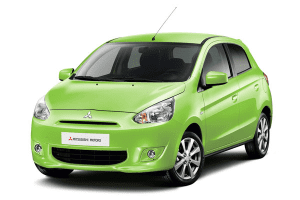
 Thailand-built Mirage 74-hp minicar was never intended for sale in the United States. Mirage is developed for the Asian developing markets, so for small Asian people driving on Asian roads. But Mitsubishi dealers, desperate for new product to sell, anything to sell in a drought of product while all others are raising their glasses, have begged the brand on their bare knees to come up with something. So the Japanese came up with a vehicle that is in no imaginable way fit for the US roads. It is tiny, underpowered, uncomfortable and will compete with larger cars in a segment known for thin dealer profit margins. Mitsubishi expects to sell just 7.000 units annually in the United States. That won’t even make them enough money to pay for marketing of the vehicle.
Thailand-built Mirage 74-hp minicar was never intended for sale in the United States. Mirage is developed for the Asian developing markets, so for small Asian people driving on Asian roads. But Mitsubishi dealers, desperate for new product to sell, anything to sell in a drought of product while all others are raising their glasses, have begged the brand on their bare knees to come up with something. So the Japanese came up with a vehicle that is in no imaginable way fit for the US roads. It is tiny, underpowered, uncomfortable and will compete with larger cars in a segment known for thin dealer profit margins. Mitsubishi expects to sell just 7.000 units annually in the United States. That won’t even make them enough money to pay for marketing of the vehicle.
Mitsubishi may sell Renault-Samsung sedans to fill holes in line-up
As Mitsubishi will focus on the development of SUVs and pick-up trucks, they have no resources to develop sedans, nor the scale to produce them profitably, so they have turned to the Renault-Nissan-Samsung alliance for help.
Mitsubishi will offer Samsung SM5 midsize sedan, also known as Renault Latitude or Safrane, built at the Renault-Samsung Motors plant in Busan, South-Korea in the US and Canadian market to fill the hole in its line-up above Lancer, where they used to have Galant.
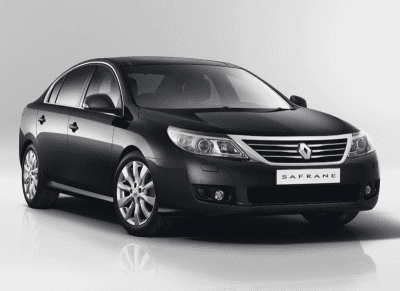 This is a vehicle that can’t even compete with Hyundai and Kia in its home market South Korea, selling around 2.500 units a month, a third of Hyundai Sonata and less than half of Kia K5/Optima sales. The whole car is as bland as it looks, it doesn’t excel in anything. It’s neither very refined, nor very stylish. Actually, that would make it fit perfectly in Mitsubishi’s line-up. But it won’t sell in the States. The only hope one can have, is that Mitsubishi will wait for the next generation of the vehicle, which is due in two years time, and that Renault leaves the design and production to Samsung, because the French haven’t been able to come up with a decent large sedan that anyone would want for decades now. If ever.
This is a vehicle that can’t even compete with Hyundai and Kia in its home market South Korea, selling around 2.500 units a month, a third of Hyundai Sonata and less than half of Kia K5/Optima sales. The whole car is as bland as it looks, it doesn’t excel in anything. It’s neither very refined, nor very stylish. Actually, that would make it fit perfectly in Mitsubishi’s line-up. But it won’t sell in the States. The only hope one can have, is that Mitsubishi will wait for the next generation of the vehicle, which is due in two years time, and that Renault leaves the design and production to Samsung, because the French haven’t been able to come up with a decent large sedan that anyone would want for decades now. If ever.
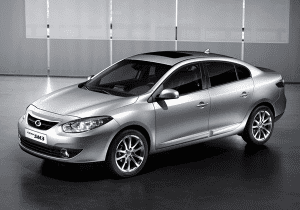
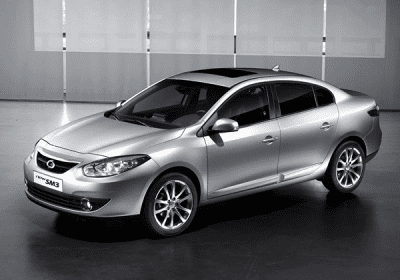 Details on the second, smaller model are not yet officially publicized, but it’s very likely based on the next generation Samsung SM3 compact sedan, also known as Renault Fluence. It will be sold by Mitsubishi in worldwide markets, and in the US and Canada it will replace Lancer, which is already way past its use-by date. This car is possibly even duller and more forgettable than its larger sibling, and will be introduced into a highly competitive segment full of cars that outclass it in every possible way. Same thing: Mitsubishi, just wait for the next generation or your fate is sealed. The Americans have no love for French cars, and they can smell one from a distance, even if it’s built in Korea and has a Mitsubishi badge. They’ll walk away. So should you.
Details on the second, smaller model are not yet officially publicized, but it’s very likely based on the next generation Samsung SM3 compact sedan, also known as Renault Fluence. It will be sold by Mitsubishi in worldwide markets, and in the US and Canada it will replace Lancer, which is already way past its use-by date. This car is possibly even duller and more forgettable than its larger sibling, and will be introduced into a highly competitive segment full of cars that outclass it in every possible way. Same thing: Mitsubishi, just wait for the next generation or your fate is sealed. The Americans have no love for French cars, and they can smell one from a distance, even if it’s built in Korea and has a Mitsubishi badge. They’ll walk away. So should you.
No sales expectations for both models have been mentioned by the Japanese automaker, but it won’t be difficult to estimate: there are about 500 dealers in the US and Canada, so one demo vehicle and one showroom vehicle each, makes around a thousand “sales”. Give or take a few. If they plan any more than that, they will have to shove them into some inattentive rental company’s lap, the automotive industry’s drainage point for unwanted cars.
The end of the road for Mitsubishi
For many Americans, the only reason for Mitsubishi’s existence was the rally-bred Lancer EVO. Since Lancer will be replaced by a Renault vehicle, all hope is on Renault Sport to give Fluence a Clio RS or Megane RS treatment, which are the hottest hatches of the bunch, in the same league as Fiesta ST or Focus RS. But don’t wait up for it, it’s just not going to happen. Not with a front-wheel-drive rental car spec sedan. And definitely not in time to save Mitsubishi from pulling out of the US market.








